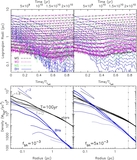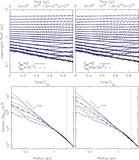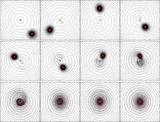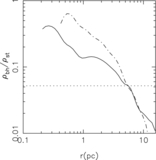Image Details
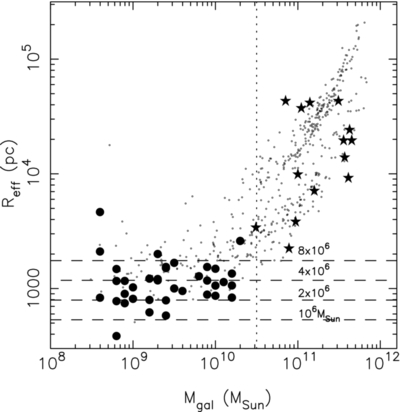
Caption: Figure 5.
Effective radii (Reff) of galaxies plotted against their masses (Mgal). Filled circles and star symbols represent, respectively, nucleated and un-nucleated galaxies that belong to the Virgo galaxy cluster (Côté et al. 2006). Dots are data from Forbes et al. (2008). The vertical line gives the value of the mass (Mgal ≈ 1010.5 M☉), which approximately set the transition between nucleated galaxies (Mgal < 1010.5 M☉), and MBH dominated galaxies (Mgal > 1010.5 M☉) (Côté et al. 2006). Dashed horizontal curves give the value of Reff obtained by setting Δth = 1010 in Equation (5) and adopting various masses of the sinking objects. The large effective radii of massive galaxies give timescales for inspiral that are usually longer than one Hubble time. The observed lack of nuclei in massive galaxies could be explained as a consequence of the longer infall times in these galaxies, due to their large effective radii.
Copyright and Terms & Conditions
© 2014. The American Astronomical Society. All rights reserved.


